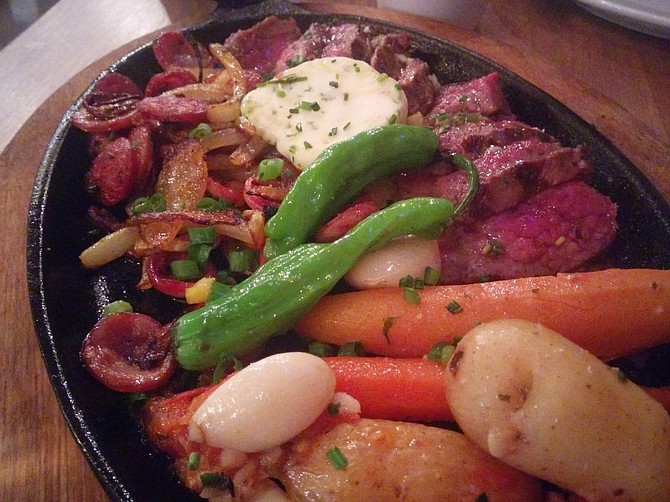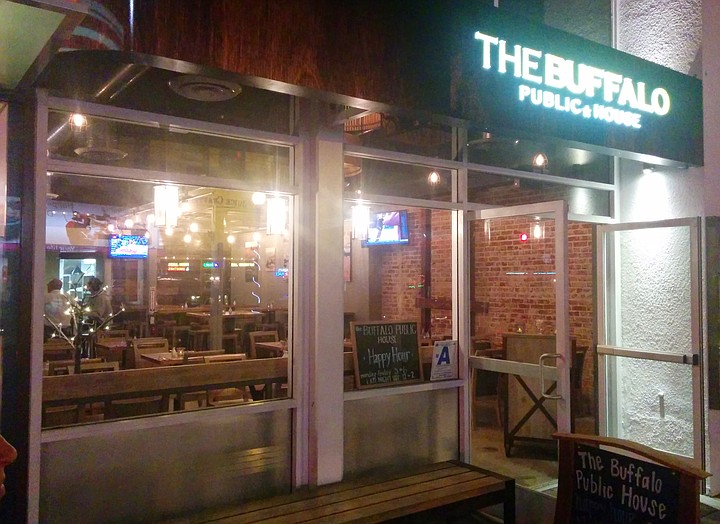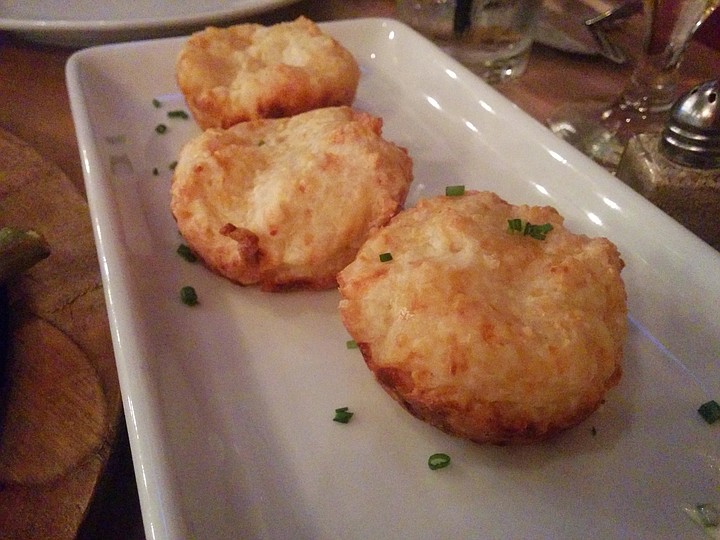 Facebook
Facebook
 X
X
 Instagram
Instagram
 TikTok
TikTok
 Youtube
Youtube


Brazilian cuisine receives little exposure in the US. Churrascaria restaurants, like Rei do Gado and Fogo de Chao, contribute to the popular image of South American carnivorism, where diners disappear beneath mountains of roast meat.
In reality, Brazilian cooking reflects the subsistence crops favored by indigenous Amerindians and the people of West African heritage who make up a significant part of the country’s population. Elements of Portuguese and Italian culinary traditions pop up here and there, alongside the random Japanese influence, courtesy of Brazil’s siz able Japanese population.
The owners of Hillcrest newcomer, Buffalo Public House, no doubt hope their take on Brazilian cooking will find favor with local palates. They face a few difficulties.
First, Brazilian food is typically very bland, at least in comparison to the heavily nuanced flavors to which local San Diegans are accustomed, and standing in strict contrast to other South American cuisines. By way of example, feijoada, the Brazilian national dish, amounts to beans and meat cooked to oblivion and sprinkled with toasted yucca flour (farofa). Asking local palates to embrace such straightforward cooking won’t be easy.

However, if the price is right, we will try anything once, and if we like it, we’ll come back. BPH’s asking price falls on the near side of too high. Their signature dish — a skillet featuring linguica with onions, grilled buffalo, and beef flank — tips the scales at $27, but fails to impress with either quantity or quality. Thankfully, the meat can be cooked to order, as opposed to the "everything always well done' style that’s the stylistic default for most Brazilians, and which would jibe with American sentiments on the way beef should be cooked. Nevertheless, almost thirty dollars for a smallish skillet of just-okay meats won’t win the hearts of Hillcrest’s fickle, spoiled diners.
Even cheaper dishes, like the $4 pão de quiejo expose the problematic twist that buns of gummy casava flour, however beloved they are in Brazil, aren’t going to win anybody over.
For Buffalo Public House to have potential in Hillcrest, the concept needs a re-think. Either more cleverly adapt the Brazilian influences to give a sharper edge to the menu, or bring the pricing down and shoot for a more casual atmosphere. The former would work better, the latter would be easier.



Brazilian cuisine receives little exposure in the US. Churrascaria restaurants, like Rei do Gado and Fogo de Chao, contribute to the popular image of South American carnivorism, where diners disappear beneath mountains of roast meat.
In reality, Brazilian cooking reflects the subsistence crops favored by indigenous Amerindians and the people of West African heritage who make up a significant part of the country’s population. Elements of Portuguese and Italian culinary traditions pop up here and there, alongside the random Japanese influence, courtesy of Brazil’s siz able Japanese population.
The owners of Hillcrest newcomer, Buffalo Public House, no doubt hope their take on Brazilian cooking will find favor with local palates. They face a few difficulties.
First, Brazilian food is typically very bland, at least in comparison to the heavily nuanced flavors to which local San Diegans are accustomed, and standing in strict contrast to other South American cuisines. By way of example, feijoada, the Brazilian national dish, amounts to beans and meat cooked to oblivion and sprinkled with toasted yucca flour (farofa). Asking local palates to embrace such straightforward cooking won’t be easy.

However, if the price is right, we will try anything once, and if we like it, we’ll come back. BPH’s asking price falls on the near side of too high. Their signature dish — a skillet featuring linguica with onions, grilled buffalo, and beef flank — tips the scales at $27, but fails to impress with either quantity or quality. Thankfully, the meat can be cooked to order, as opposed to the "everything always well done' style that’s the stylistic default for most Brazilians, and which would jibe with American sentiments on the way beef should be cooked. Nevertheless, almost thirty dollars for a smallish skillet of just-okay meats won’t win the hearts of Hillcrest’s fickle, spoiled diners.
Even cheaper dishes, like the $4 pão de quiejo expose the problematic twist that buns of gummy casava flour, however beloved they are in Brazil, aren’t going to win anybody over.
For Buffalo Public House to have potential in Hillcrest, the concept needs a re-think. Either more cleverly adapt the Brazilian influences to give a sharper edge to the menu, or bring the pricing down and shoot for a more casual atmosphere. The former would work better, the latter would be easier.
Comments